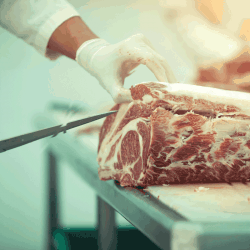If you prepare your own cuts of meat, chances are you use a boning knife. Boning knives are a handy tool for separating the meat from the bone. Due to working near bone, you will see the blade start to dull over time. We have all the steps to sharpen your boning knife blade as good as new.
Here is how to sharpen your boning knife:
- Set up your whetstone
- Angle your knife on the whetstone
- Sharpen one side at a time
- Rinse off your knife
While sharpening, you will want to hold your blade at anywhere from a seventeen to a twenty-five-degree angle.
This method uses a whetstone to sharpen the blade. This sharpening method can get you very precise angles and removes the least material. In addition, there are other methods that are less time-consuming. Keep reading for all the way you can sharpen your boning knife.
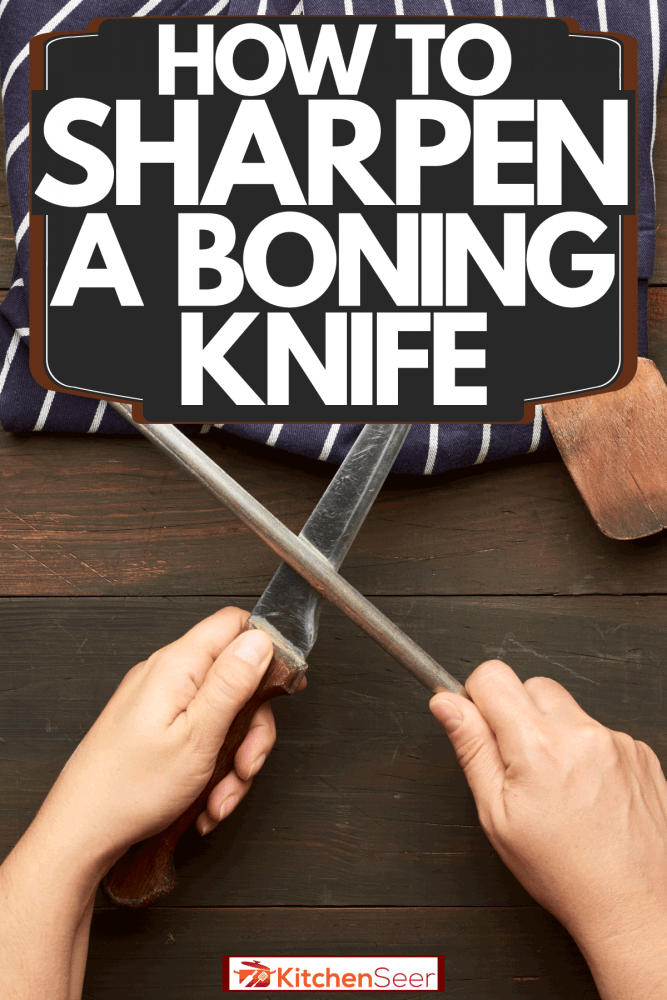
Steps for How to Sharpen a Boning Knife
1. Set up your whetstone
First, you will need to select and set up your whetstone. Whetstones are stones of varying grit used to sharpen the edge blades. You will see grits ranging from very coarse to very fine. For your boning knife blade, something on the finer side is recommended.
Check out this 3000 grit whetstone on Amazon.
The ideal stone to use for a boning knife would be a three thousand grit whetstone. Once you have your whetstone selected, you can prepare it for sharpening.
Whetstones need to be wet to sharpen effectively. You should soak the stone for about ten to fifteen minutes before sharpening. When choosing a workspace, make sure that the stone will not side around during sharpening.
The model above has an included stand to keep the stone steady. If you do not have a stand, you should place the stone on something slide-resistant like a wet rag or non-slip liner.
Click here to see these non-slip liners on Amazon.
2. Angle your knife on the whetstone
Next, you want to perfect your grip and angle on your knife. Your knife should not rest flat on the stone. Instead, the blade edge should create an angle with the whetstone. For this kind of knife, you will want to maintain a twelve to twenty-degree angle.
There is a handy trick to get the perfect angle on your knife for sharpening. Take a stack of quarters and place it on your whetstone. Then, rest the back of the blades on the quarters to create an angle with the stone. The edge of your knife will be at the approximate angle for sharpening.
The number of quarters needed will depend on the width of your blade and your desired angle. Use a ruler to measure your blade from the back to the blade edge. You can find a chart of blade widths and the number of quarters needed for each angle here.
The following video shows how to use this quarter trick:
When your find the proper angle, try to hold your wrist steady while sharpening. The angle does not have to be perfect to sharpen the blade. The quarter trick will get within three degrees of your desired angle.
How to eyeball the angle
If you do not have access to quarters, there is another way to get an approximate angle. This method is a lot less precise but requires no additional tools. Start with your blade perfectly perpendicular with the whetstone; this is ninety degrees.
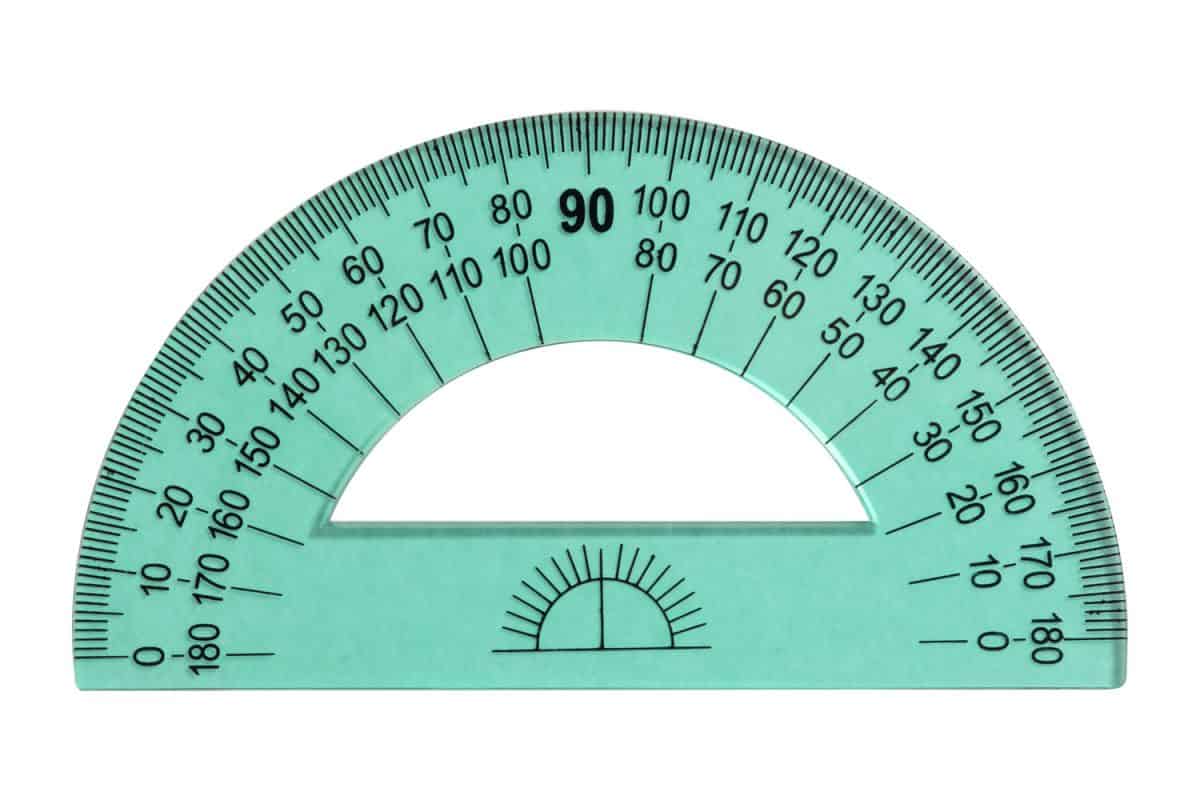
If you adjust your knife to cut that angle in half, that is forty-five degrees. Half of that angle is 22.5 degrees. Lastly, half of that angle would be around 11 degrees. Using these rough angle measurements can get you reasonably close to the suggested sharpening angles.
Are boning knives sharp?
Yes, boning knife blades are very sharp and flexible. They are especially useful for cutting meat and connective tissue from around the bone. Due to its purpose, you will find that the blade angles are steeper than something like a cleaver. They are also made strong enough to be in contact with bone.
3. Sharpen one side at a time
Then, once you find your angle, you can begin sharpening. Even if you have soaked your whetstone, keep the surface wet while sharpening. Sharpening one side at a time gives you more control over the angles. When sharpening, always move your blade edge from heel to tip in one smooth motion.
Boning knife blades are on the thinner side, so apply light even pressure during strokes. One full stroke is from heel to tip and back to heel. Start with thirty strokes on each side to sharpen the edge. When straightening a curved blade, do not use straight up and down strokes. Use a sweeping motion while sharpening to follow the contours of the blade.
What does a boning knife look like?
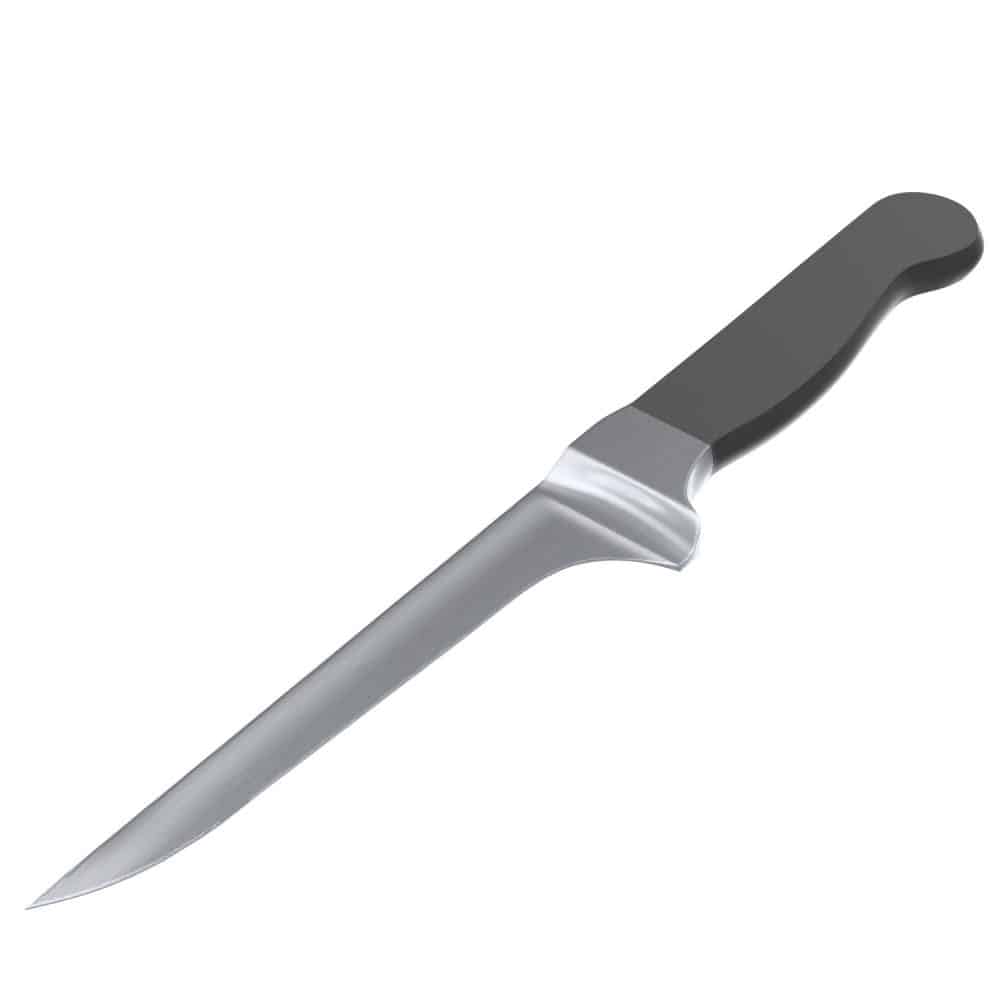
Boning knives have long, thin blades and are on average five to seven inches long. They have a gentle curve that sweeps up to the tip. The tips of these knives are very sharp, making them perfect for delicate fish and removing skin.
4. Rinse off your knife
Finally, after sharpening, you need to rinse your blade. The sharpening process will create a fine metal powder that gets trapped in the water while sharpening. They are necessary to sharpen the blade, but you don't want them to get into your food.
You can hold the blade under some running water to clean off the particles. After sharpening, you will also want to clean off your whetstone. For this, you can use a damp towel to wipe away the metal shavings.
This video shows the whetstone sharpening process:
How do I know if my knife is sharp?
The best way to test if your knife is sharp is to try using it. Try cutting something like a fruit or vegetable; you can try with meat as well. If it creates a smooth, clean, cut, it is sharp. If it takes more cutting pressure and sawing, it is not sharp enough.
There is also the famous paper cutting test. While holding a piece of paper in one hand, use the knife to slice straight down into the paper. If it cuts through without resistance, the blade is sharp.
What do butchers use to sharpen their knives?
Butchers often use a steel sharpener to sharpen their knives. These sharpen the blade faster but remove more material than whetstones. The process for using sharpening steels is pretty similar to using a sharpening stone.
First, position your steel with the nose down on a non-slip surface. Then alight your knife with the steel at the correct angle. Lastly, use swiping motions from heel to tip to sharpen your blade.
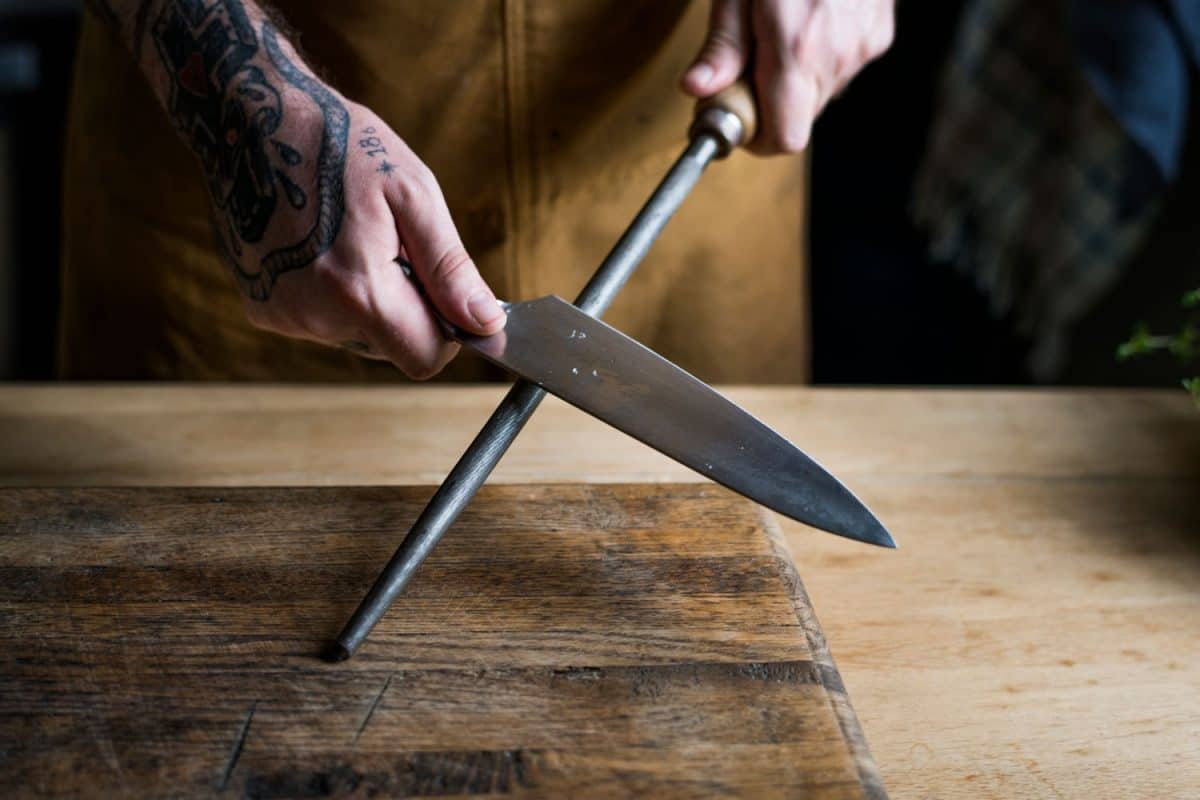
Sharpening steels are often confused with steel honing rods. To be clear, honing rods do not remove material; they straighten the edge of the blade. Sharpening steels remove material from the blade to sharpen the edge.
When working with sharpening steels, alternating sides while sharpening is more reasonable. The following video gives instructions and helpful tips on using a sharpening steel:
Click here to see this steel sharpening rod on Amazon.
How to use a honing rod
As mentioned, honing rods are used to straighten your blade. This is what you can do in between sharpening for cleaner cuts. You will use them just like you use a sharpening rod. This does not shave metal off of the blade so that you can do it more often.
The recommended usage is no more than six times after each use. This means on each side so that you can do twelve alternating swipes after each use. Once honing no longer gives you cleaner cuts, that's when you know it's time to sharpen.
Click here to see this honing rod on Amazon.
What is the best size boning knife?
The best size boning knife will depend on your need for it. An average boning knife is about six inches long. Smaller blades are great for working with fish and poultry. Longer blades are sturdy and great for working with larger portions of meat. The average household would do well with a six-inch boning knife.
Aside from length, also consider the curvature of the blade. Straight blades work well for powering through large cuts. Curved blades are great for trimming and precision work.
Click here to see this boning knife on Amazon.
Click here to see this curved boning knife on Amazon.
In Closing
Boning knives are an often overlooked knife in the kitchen. If you maintain their sharp edge, they will serve you well for years to come. Using a whetstone is the most controlled way to get your precise angle.
If you use a sharpening steel, make sure the rod stays stationary. Lifting your sharpening tool can offset the angle you are holding. For more knife sharpening tips and tricks, consider these articles:
How To Use A Wusthof Knife Sharpener – 5 Steps To Follow








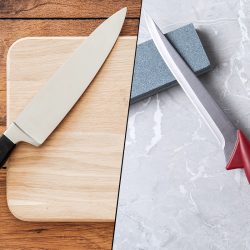

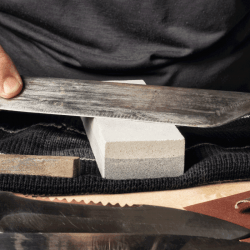
![knife and old iron sharpener with handle for kitchen knives on a white background, Do Knife Sharpeners Wear Out? [And When To Replace Yours]](https://kitchenseer.com/wp-content/uploads/2021/09/knife-and-old-iron-sharpener-with-handle-for-kitchen-knives-on-a-white-background-250x250.jpg)
